TRD Issue 94 - Briefing: Meta Sees, FedEx Ships, DoorDash Calls, The Platform Transformation Race
Meta adds image capabilities to Llama AI as FedEx and DoorDash launch full commerce platforms. Walmart tests 3D printing while retailers battle discount fatigue.
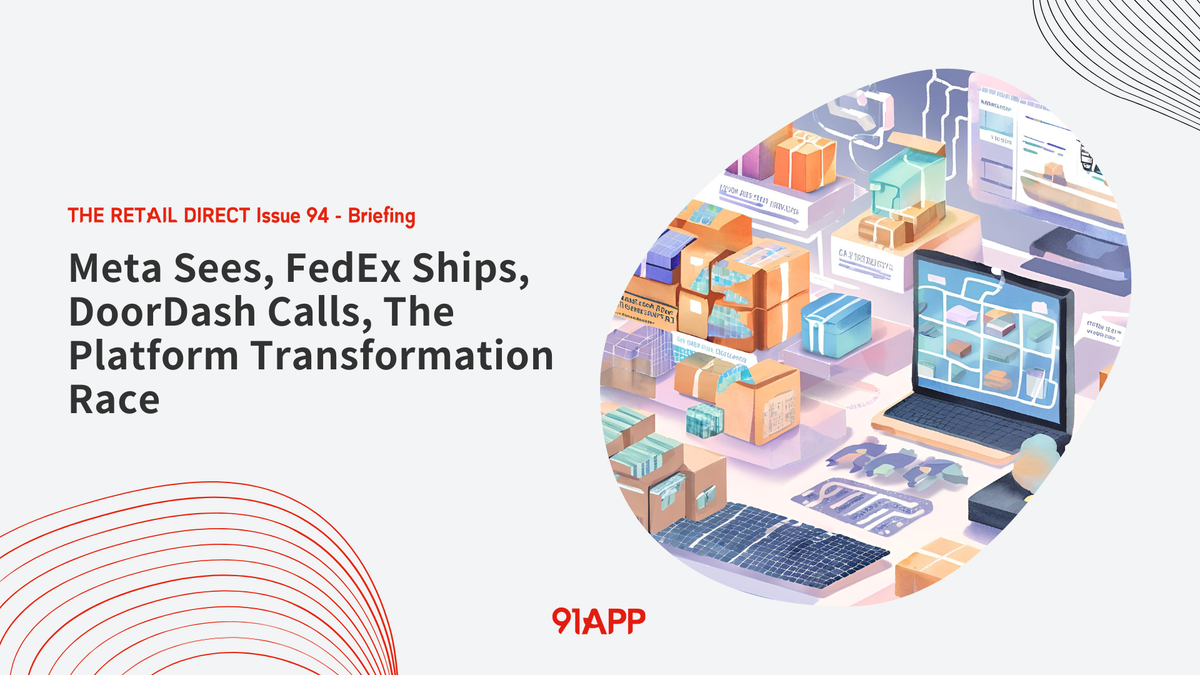
Hello Subscribers,
Just wrapped up this week's Retail Direct, and thought you'd want a quick rundown of what's moving the industry.
Meta's Llama 3.2 models have finally caught up to competitors by supporting image processing. I've been watching this space closely, and it's interesting how they're positioning themselves against Google and OpenAI while navigating EU regulations that are keeping European users from accessing these features.
FedEx officially took its fdx platform nationwide after that lengthy testing period we've been hearing about. Having spent some time with their dashboard, I can see how their Shopify and Etsy integrations could be game-changers for mid-sized merchants trying to level up their fulfillment operations.
Have you checked out DoorDash's new commerce platform yet? Their AI phone ordering caught my attention – it seems like they're making the same pivot we discussed last quarter, evolving from simple delivery into comprehensive restaurant tech. Smart move considering how tight those margins have become.
Walmart's 3D printing experiment for that Tennessee store addition is fascinating. I'm not entirely convinced it's ready for prime time, but it's worth keeping an eye on as a potential solution to the construction challenges we've faced with our new locations.
Last thing worth mentioning: the "deal fatigue" trend is getting real. With Prime Days multiplying and everyone from Target to Best Buy piling on with competing sales, our strategy to focus on value-adds rather than straight discounts is increasingly prescient.
Happy reading!
The Retail Direct
About 91APP
Founded in 2013, 91APP is the premier OMO (online-merge-offline) SaaS company, providing one-stop omnichannel retail solutions in Taiwan, Hong Kong, and Malaysia. It offers advanced Commerce Solutions and Marketing Solutions that enable retail brands to penetrate the D2C (Direct-to-Consumer) e-commerce market and drive operational benefits to their full potential. In 2021, 91APP became the first SaaS company to be listed in Taiwan and has been named one of Taiwan's "NEXT BIG" companies by Startup Island TAIWAN.
For more information about 91APP (TWO: 6741), visit 91app.com.
AI
Meta launches multimodal Llama 3.2 AI models with image capabilities
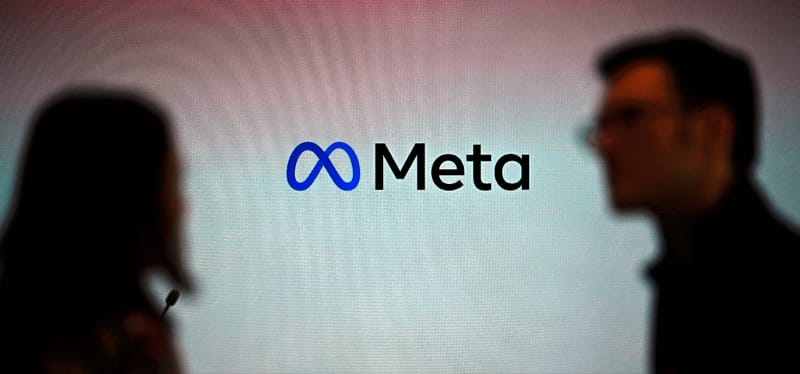
Why it matters: Meta's latest AI models can now analyze images, charts, and graphs, marking a significant expansion beyond text-only capabilities that puts the company in direct competition with OpenAI and Google's multimodal offerings.
The details:
- Llama 3.2 has four versions: 11B and 90B models with image processing, plus lightweight 1B and 3B text-only models for mobile devices.
- The multimodal models can interpret charts, caption images, and identify objects in pictures.
- All models simultaneously process up to 100,000 words and serve as drop-in replacements for previous versions.
The catch: European users can't access the multimodal features due to regulatory concerns around the EU's AI Act and GDPR compliance. Meta cited the "unpredictable" regulatory environment as the reason for the restriction.
What's next: Meta continues spending billions on AI infrastructure while positioning itself as the "open" alternative to competitors. The models join Meta's broader strategy to commoditize AI development and capture market share through widespread adoption, with over 350 million Llama downloads.
Bottom line: While these models don't solve core AI problems like hallucination, they strengthen Meta's position in the AI race and advance its goal of becoming synonymous with generative AI.
Source: TerchCrunch
Microsoft launches Bing generative search to compete with Google's AI Overviews

Why it matters: Microsoft is rolling out AI-powered search summaries to all U.S. users, directly challenging Google's dominance in AI-enhanced search experiences and potentially reshaping how people find information online.
The details:
- Bing generative search aggregates web information to create AI-generated summaries for search queries
- Users can trigger it by searching "Bing generative search" or through automatic prompts for informational queries
- Like Google's AI Overviews, users can dismiss AI summaries for traditional search results
The risks: AI-generated search results have a troubled track record, with Google's system suggesting putting glue on pizza and other platforms providing dangerous advice. Microsoft claims its system fulfills user intent more reliably, but hasn't shared new data on accuracy.
The impact on publishers: Studies show Google's AI Overviews could reduce publisher traffic by 25% since summaries de-emphasize article links. Microsoft promised to monitor traffic impact but provided no new research on how Bing's feature affects website clicks.
Bottom line: While Microsoft's search market share remains small at 10.51% versus Google's 81.95%, this move intensifies competition in AI-powered search and could set new industry standards for information discovery.
Source: TechCrunch
e-Commerce
FedEx launches fdx platform nationwide to capture e-commerce growth
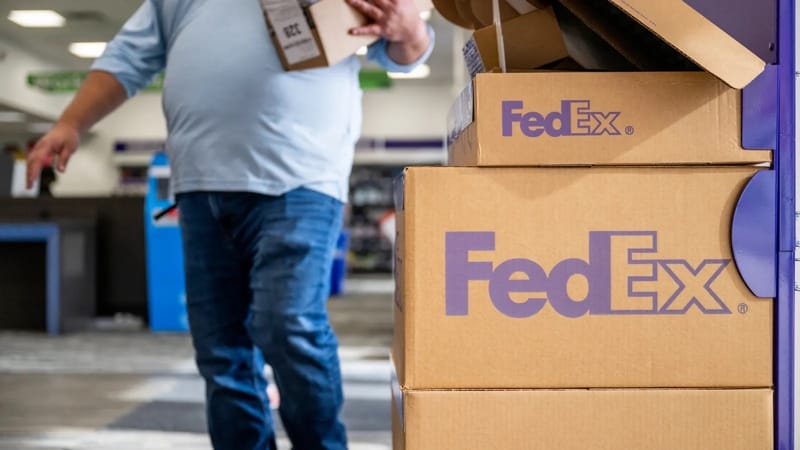
Why it matters: FedEx is betting big on e-commerce integration with a comprehensive platform that could reshape how online merchants manage shipping, returns, and customer experience — positioning itself as more than just a delivery service.
The details:
- The fdx platform, first unveiled in January, is now available to all U.S. customers after a private preview period.
- Integrates with major e-commerce platforms, including Shopify, Etsy, and Salesforce.
- Supports multiple carriers beyond FedEx, including UPS, USPS, and DHL.
Key features:
- More precise delivery timeframes using data from 15 million daily packages
- Centralized returns management and inventory handling
- Sustainability tracking with emissions predictions
- Customized order tracking pages with branded communications
The strategy: FedEx aims to deepen relationships with e-commerce merchants by offering end-to-end supply chain solutions rather than just shipping services. CEO Raj Subramaniam says the goal is to "make supply chains smarter for everyone."
The challenge: Experts question whether fdx can differentiate itself in a crowded market of e-commerce solutions, particularly against established players with deeper merchant relationships.
Bottom line: This represents FedEx's major role in capturing more value from the e-commerce boom by becoming an integrated platform partner rather than just a logistics provider.
Source: Supply Chain Dive
DoorDash unveils comprehensive commerce platform with AI phone ordering
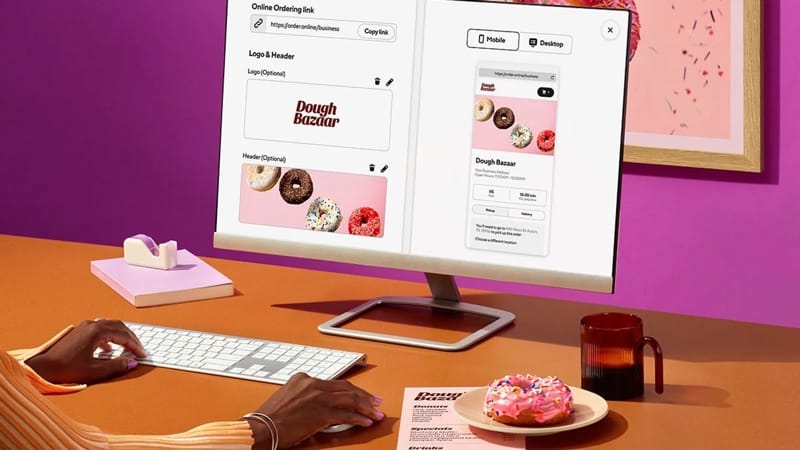
Why it matters: DoorDash is expanding beyond delivery into a full-service commerce platform, giving restaurants tools to build direct customer relationships and reduce dependence on third-party marketplaces.
The platform includes five core products:
- Online Ordering Mobile Apps: Native branded apps for restaurants (new)
- Phone Ordering: AI-powered automated phone ordering system (new)
- Customer Support Solutions: Dedicated customer inquiry platform (new)
- Online Ordering: Renamed from Storefront
- Drive on Demand and Tableside Order and Pay: Rebranded existing services
Why apps matter: With 60% of U.S. consumers ordering delivery weekly and 90% of phone time spent in apps, mobile applications offer higher conversion rates and better engagement than websites, potentially driving significant additional sales for restaurant partners.
The strategy: The platform creates "direct channels" for merchants to reach customers, as President and COO Prabir Adarkar explained. This aligns with DoorDash's broader push to help restaurants drive sales through tools like discounting features and automated ordering.
Enhanced business tools: DoorDash also updated its Business Manager app with quick payout access, personalized homepage feeds, and integrated marketing campaign management based on merchant feedback.
Bottom line: DoorDash is positioning itself as an end-to-end commerce solution rather than just a delivery platform, helping restaurants build stronger direct customer relationships while maintaining their marketplace presence.
Source: Restaurent Dive
Retailers battle 'deal fatigue' as endless promotions squeeze margins

Why it matters: The constant barrage of sales events from Amazon Prime Days to retailer copycats forces brands to rethink their promotional strategies as customers become conditioned only to buy on discount, and marketing budgets strain under pressure.
The problem:
- Sales events now run nearly year-round, creating a "blur of bargains" from July through December.
- Amazon's dual Prime Days (July and October) plus competing events from Target, Walmart, and Best Buy.
- New marketplaces like TikTok Shop, Shein, and Temu drive prices even lower.
- Brands face Amazon's pricing algorithms that penalize products sold cheaper elsewhere
The financial squeeze:
- Marketing budgets are up 10-20% just to cover rising advertising costs
- Additional pressure to fund more frequent discounts across multiple platforms
- Brands struggle to maintain margins while meeting promotional demands
- Luxury brands are particularly challenged by discount culture expectations
Creative solutions emerging:
- Tiered discounts based on spending thresholds
- Marketplace-exclusive products and bundles
- Value-adds like loyalty points, free gifts, and community access.
- Some brands are capping discounts (like Obvi's 25% rule) to avoid diminishing returns
The bigger risk: Training consumers to only buy during sales events, creating customers loyal to price rather than brand. As one founder noted: "It's training the consumer not to buy unless there's a deal."
Bottom line: While most brands still participate in major events like Prime Day, they're becoming more selective about promotions and seeking ways to build genuine value beyond discounts.
Source: Modern Retail
Retail
Walmart tests 3D printing for retail construction in groundbreaking project

Why it matters: Walmart's nearly 8,000-square-foot 3D-printed addition in Tennessee represents one of the largest commercial uses of concrete printing technology, potentially revolutionizing how retailers build stores and infrastructure.
The project details:
- Partnership with Colorado-based Alquist 3D to build pickup and delivery space
- First time Walmart has used 3D printing at this scale
- Took 45 days of printing, though the company believes this could be cut in half.
- It costs roughly the same as traditional construction but could become cheaper once refined.
The benefits claimed:
- Faster construction with fewer workers on site
- More sustainable using recycled, near-carbon-neutral materials
- Stronger buildings require less insulation and structural engineering
- Potential cost savings of up to $25,000 for wall systems in residential projects.
The challenges faced:
- Weather and humidity complications in the Tennessee summer heat
- Technical issues with the concrete setting too quickly in the equipment
- Had to switch to nighttime printing for better temperature control
- Limited aesthetic options and quality control concerns
Industry context: Only 130 3D-printed buildings existed as of 2023, with the technology still in its infancy for commercial use. However, retailers are racing to adopt automation technologies across operations, from self-driving forklifts to construction innovations.
What's next: Walmart has already commissioned a second 3D printing project with Alquist 3D, aiming to demonstrate consistent cost savings, speed, and safety improvements.
Bottom line: While still experimental, 3D concrete printing could address construction workforce shortages and reduce building costs if technical hurdles are overcome.
Source: Modern Retail
Labor unions split on Kroger's $25B Albertsons deal as trials intensify

Why it matters: The largest supermarket merger in U.S. history faces a unique challenge — federal regulators use worker protection arguments to block the deal. At the same time, some union leaders worry rejection could hurt their members.
The cases: Three separate trials are underway with the FTC, eight states, and Colorado all seeking to stop the merger. Final briefs were filed Friday after federal court hearings.
The labor argument: Regulators claim combining Kroger and Albertsons would reduce worker bargaining power since the companies compete for employees. The merged entity would employ over 700,000 people across nearly 5,000 stores.
Union divisions emerge:
- UFCW International unanimously opposes the deal
- But some local leaders privately worry Kroger is "the only viable union operator" to buy Albertsons
- One northeast union leader fears blocking the merger could put Albertsons stores "in jeopardy."
The companies' defense: They argue the merger is necessary to compete with Walmart (25.7% grocery market share) and Amazon. Combined, Kroger-Albertsons would hold 14.4% market share.
The risk: Albertsons' CEO warned that if the deal fails, the company may face job cuts, store closures, or market exits to remain viable.
Bottom line: While regulators frame this as protecting workers, some union leaders fear rejecting the deal could leave their members worse off if Albertsons struggles independently.
Source: FT
Smart shopping apps help fashion buyers track prices and find sold-out items

Why it matters: As luxury prices soar and savvy shoppers demand better deals, new apps are emerging to help consumers navigate pricing inconsistencies across platforms and locate hard-to-find fashion pieces.
The price-tracking trend:
- Radar app scours retailers, resale, and rental platforms to find the best prices and sends alerts on sales.
- Found £760 Bally loafers on Farfetch for £697 at a Como boutique and £720 on Net-a-Porter
- 2,000 users after six months, with the core demographic being tech-literate women aged 30-35.
Beyond basic search:
- Lyst reports 90% of searches now include brand names, with users seeking specific SKUs and seasons
- Shoppers search for "Alaïa Strass ballet flats" instead of generic "black flats."
- Reflects growing brand awareness and shopping sophistication
The sourcing solution:
- Sourcewhere app connects buyers with 50 sourcing experts who locate sold-out or archive pieces
- The average order value is £1,100, with a 10% sourcing fee.
- Match times range from 15 minutes (The Row flats) to 18 months (rare Margiela pieces)
The bigger picture: These tools reflect how luxury consumers are becoming more strategic, prioritizing efficiency and value while maintaining access to exclusive items that traditional retail can't provide.
Bottom line: Fashion shopping is evolving from impulse-driven to data-driven, with apps handling the legwork while shoppers retain the satisfaction of securing coveted pieces.
Source: FT
Marketing
TikTok launches search ads but fails to lure Google budgets

Why it matters: TikTok's new search advertising feature could challenge Google's dominance, but early results show mixed performance that isn't convincing marketers to shift their spending yet.
The mixed results:
- Most brands saw weaker performance than Google Search and TikTok's regular ads
- Two brands outperformed Google on key metrics, showing potential but inconsistent results.
- Marketers want more proof before reallocating established search budgets
Key obstacles:
- Limited advertiser control over keyword targeting
- The algorithm still decides which queries trigger ads, raising brand safety concerns.
- Previous tests showed irrelevant or risky keyword matches
The opportunity:
- Easy integration using existing video content
- TikTok is offering ad credits for early adopters
- Could bridge awareness campaigns with performance marketing
Industry response: Agencies see search ads as additional TikTok inventory, not a Google replacement. One executive said: "We view it as an additional placement... not as a replacement for traditional search."
Bottom line: While TikTok search ads promise discovery-focused marketing, they need consistent performance data before marketers redirect their Google dollars.
Source: Digiday
LG adds screensaver ads to premium TVs, even $3,000+ OLED models

Why it matters: Even buyers of LG's most expensive TVs can't escape advertising as the company rolls out full-screen screensaver ads powered by its LG Ad Solutions division, marking another step in TV makers' push to monetize viewers.
What's happening:
- Full-screen ads appear before regular screensavers activate
- Ads are localized by region and include both LG services and external partners
- Feature deployed across LG's 2024 lineup, including premium G4 OLED models.
The bigger trend: TV manufacturers increasingly treat their platforms as "digital billboards." Amazon, Google, Roku, Samsung, and now LG all use ads to subsidize hardware costs and boost profits.
The escape routes:
- Users can disable ads by turning off "Screen Saver Promotion" in Additional Settings
- Apple TV 4K remains ad-free when connected to any TV
- Disconnecting TVs from the internet blocks smart features but eliminates ads
Industry context: The LG Ad Solutions director called screensaver ads a "significant milestone in enhancing viewer engagement" and utilizing "idle screen time to boost brand visibility."
Bottom line: Premium TV buyers now face ads even on flagship models, reflecting how manufacturers prioritize advertising revenue over user experience, though opt-out options still exist for now.
Source: flatpanelshd


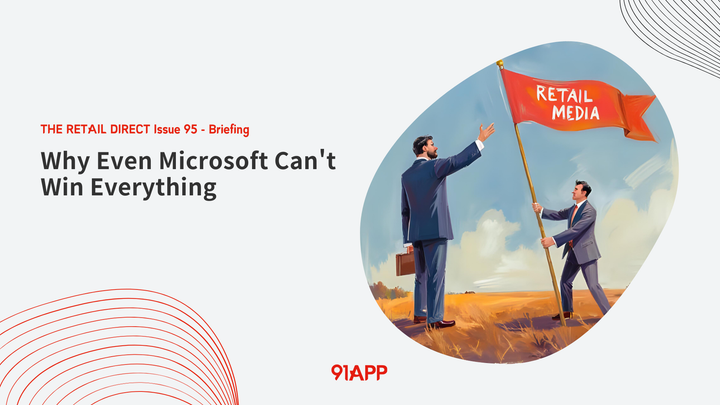

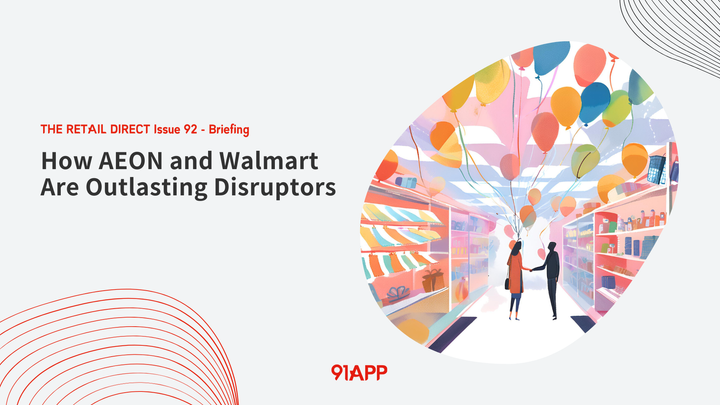
Comments ()